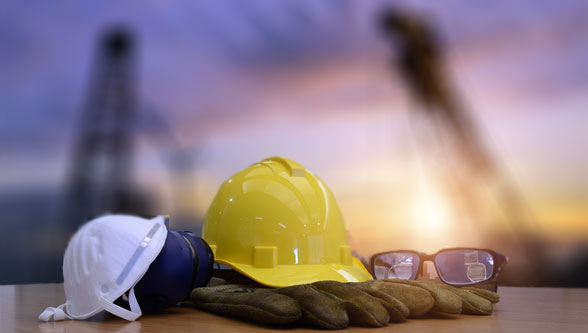The construction industry is growing and changing at a rapid rate. Demand for new homes and businesses is on the rise, as is the desire for faster, cheaper service without risking quality and safety. Of course, this is easier to talk about than it is to carry out. As companies struggle to meet these demands, they look to tried-and-true methods of keeping ahead of the competition. From hiring more workers to increasing management, construction companies push to stay on top.
However, these methods and protocols likely won’t be good enough to compete going forward. Leaders in construction will have to find new ways to meet demands and improve safety concurrently. Often, this entails implementing the latest technology and safety trends to ensure workers remain protected and informed.
Mobile Tools
An estimated 5 billion people around the world own a smartphone, toting them around to school and work and using them everywhere — on buses, planes and even the toilet. It’s only natural construction workers would bring their phones to their worksite. And, while some might see this as a distraction, smartphones can be invaluable for workers. This year, environmental health and safety professionals will focus on using mobile tools to complete tasks such as carrying out inspections and filing injury reports.
Mobile apps used for these purposes allow for more comprehensive data collection, allowing employees to add photos. They also eliminate illegible handwriting and vague problem descriptions. Additionally, workers can store everything in the cloud, so no data ever goes missing, as might happen with paper forms. Mobile apps also allow site managers to oversee and document multiple projects at various locations, streamlining and expediting project timelines and enabling team members to communicate effectively and effortlessly.
Wearables
With the increase of smartphones comes the arrival of wearable technology. Also known as smart personal protection equipment, wearables are the latest trend in construction safety, streaming a worker’s location and status while on the construction site. Many can even help with check-in and check-out procedures. In the coming year, an estimated 22% of construction companies will expect their workers to use wearables to monitor vital signs, and 43% plan to use them to track location.
This tech could improve safety by alerting others when a worker gets injured, reducing the response time to struck-by and caught-in-between incidents. Some wearables may event prevent these situations by alerting workers to vehicles or equipment that is perilously close. For instance, waist belts embedded with vibrating monitors alert workers to dangerous situations, preventing various injuries and accidents. Professionals expect next-generation smart PPE to even monitor fatigue and alertness levels, helping managers determine when to give breaks.
Autonomous Vehicles
While self-driving vehicles are still in the works, they may become a reality within the next decade. These autonomous cars would follow road contours, respond to the environment, avoid other vehicles and pedestrians, adjust to weather conditions and even anticipate dangerous situations. For the construction industry, this would be a huge game-changer, allowing them to rely on vehicles to transport personnel, equipment and machinery instead of people. Many believe that this will lower vehicle accident rates and reduce fuel and labor costs.
Autonomous vehicles will undoubtedly need more federal and state regulations before the industry can consider implementing them. However, construction sites remain one of the ideal locations to test AVs. Unlike public roads, job sites are relatively controlled settings where workers can program AVs to perform repetitive tasks. This controlled environment makes AVs less hazardous. AVs may even save workers pain, suffering and even death due to repetitive motions, falls, electric shock and other common worksite hazards.
Proper Installation
Until recently, the Occupational Safety and Health Administration has concentrated on identifying unsafe conditions. In other words, the industry has mostly spent their time and effort on decreasing risks after an accident has already happened. However, OSHA is shifting away from detection strategies to preventive programs that address issues before a problem arises. The industry has channeled much of this effort toward ensuring workers properly install protective equipment like scaffolding and guardrails. Supervisors responsible for inspecting this equipment must conduct inspections as soon as possible to prevent injuries and fatalities.
Supervisors are also stressing the proper installation of materials like torsion springs on the job site. These springs often play a role in smoothly lowering and raising garage doors. However, if a worker installs them improperly, the door may not function correctly, increasing the risk of injury. Likewise, workers must also correctly place and install systems such as ventilators, charging stations and generators to reduce the risk of fire, poisoning or electrocution.
Retraining
There is also a new focus on retraining workers within the construction industry to re-instill safety precautions. This renewed emphasis ensures compliance with policies and keeps workers up to date on new regulations. Thus, employees stay on top of their game and become more confident and capable in performing their tasks. Currently, OSHA requires several specific roles to take refresher courses. These include workers exposed to occupational noise, hazardous waste, mechanical power presses, asbestos, lead, benzene and more. The agency requires workers to take these eight-hour refresher courses annually.
To incentivize retraining programs, both required and unrequired by OSHA standards, many businesses are offering stackable credentials. These are short-term, industry-related credentials that award a certificate to workers upon completion of the retraining program. These certificates may allow them to work within other areas of the industry or even manage projects. Other companies are paying their employees to participate in retraining or offering raises to those who complete programs to further incentivize periodic training.
The Future of Safety
For every dollar the construction industry spends on health and safety programs, it can save $8, mostly because worker injuries and fatalities are costly. By investing in safety now, the industry can prevent costly mistakes and thousands in medical pay. Luckily, the emergence of new technology and safety trends have made this investment easier than ever. From wearables to incentivized retraining programs, technology is improving workplace safety, and will continue to do so over the next decade.
Article by —

Megan Ray Nichols
Freelance Science Writer
[email protected]
www.schooledbyscience.com/about
[gap height=”20″]

